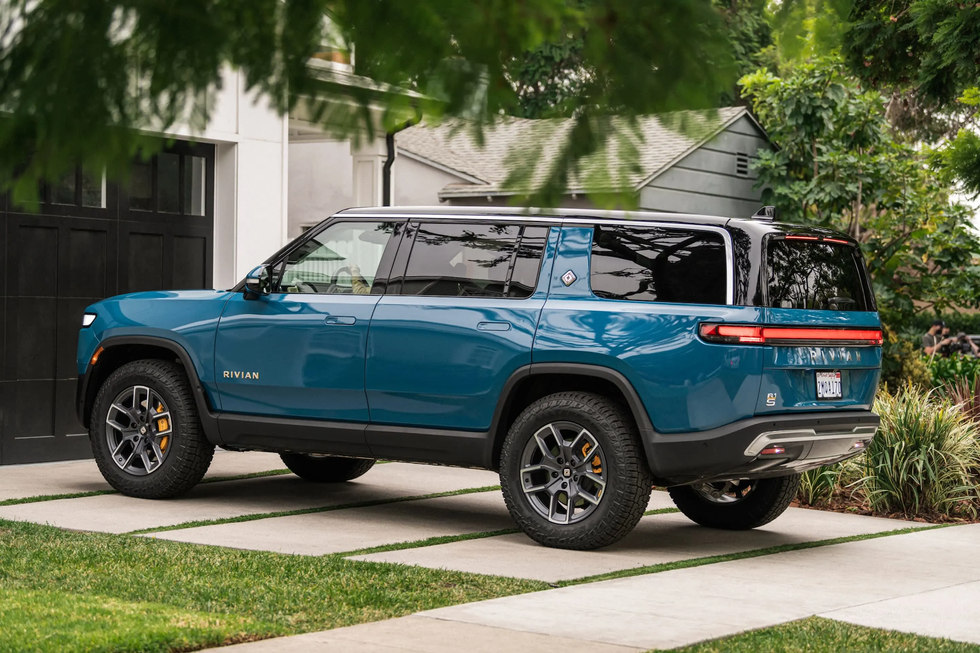As we head into winter, having lost count of the impending existential threats now facing humanity, we can at least take some solace in the simple act of browsing Rightmove for a compound in North Wales before everyone else does.
Hopefully, it won’t be long before the search categories filter whether the property sits outside of nuclear-fallout zones, if it has its own hydroelectric power supply, if the fence can deter invaders when the mass exodus begins and how vulnerable the area is to temperature rises. North Wales could surely benefit from a degree or two. We’ll have to worry about the robots later.
As a benchmark, the house owned by Michael Caine’s character Jasper in the 2006 film Children of Men would do nicely. It had a concealed entrance, plenty of land for vegetables, a sizable sound system and a greenhouse producing hydro weed. Not a bad way to go out, whatever your life stage.
In reality, of course, the level of DIY required for such a move makes gun battles outside the corner shop seem attractive by comparison.
At least we still have the power to choose a car that has one eye on end times. Jasper
drove a modified Citroën CX Estate, strengthened at the front, presumably to reduce denting when you need to plough through security cordons or escape from angry mobs. A lovely, smooth ride, but notorious for rust problems.
Perhaps it’s timely, or even by design, that we find a glut of rugged, hefty, functional — and, yes, luxurious, we’re not animals (yet) — new models on offer in 2023 that appear positively built for hard living.
Where once people who drove giant off-roaders in cities were mocked, they could soon earn a quiet respect for being able to safely evacuate their families in a way the Toyota Yaris owner could only dream of. For the first time in the world of SUVs, many of these upcoming cars are also electric.
On looks alone, no model feels more aligned to a post-society future than the Tesla Cybertruck. The wedgey off-roader was inspired by the Lotus Esprit in The Spy Who Loved Me, but this pickup’s marketing pitch is decidedly Mad Max, featuring a matte-metal paint job, dusty desert backdrop and bulletproof glass, which Elon Musk still managed to break when it was first announced in 2019.
Unsurprisingly, Musk’s sales pitch is compelling, declaring it could be Tesla’s best model yet, with off-road credentials to “kick butt in Baja”, a 2.9-second 0-62mph time and an outlandish 500-mile range. All for a slightly remarkable £40,000 price tag. It’s no surprise that Tesla has stopped taking orders, with production delayed until next year. We hope that’s not too late.
A more recent American start-up with a decidedly outdoor vibe is Rivian, famous for being backed by Amazon and for having the biggest American IPO since Facebook in 2014, with
a market valuation at $100bn. Things have slumped since, but having two impressive new cars on the road will surely help.
Rivian’s R1T is another imposing pick-up, weighing in at three tonnes and managing 316 miles from its giant battery pack. With smart styling, a luxury feel and phenomenal acceleration, it also makes a play for thoughtful details and storage options, including a “gear tunnel” that puts the space behind the cab to use.
Also due on the road this winter is the £75,000 R1S, essentially a spacious SUV version of its pick-up cousin, pitched more at a family of weekend warriors — or just straight-up warriors, if that’s how things pan out. An additional highlight is the combination of roof-top tent and foldaway camp kitchen, for when you really don’t want to be tracked down.
The R1S’s silhouette isn’t unlike an American twist on a Range Rover, the fifth generation of which also launched this summer in that blink-and-you’ll-miss-it way that Porsche has so carefully evolved the 911.
This autumn, the Range Rover Sport arrives as its smaller, nimbler, better-looking and slightly cooler younger brother, with plug-in hybrid options available at launch and an EV version on its way in 2024. There are few better places for shutting out the world than its hushed cabin, which is also heavily gadget-laden, including an eHorizon navigation system that detects upcoming bends and obstacles.
The Land Rover Defender is now available in the longer wheelbase 130 version, which can comfortably seat eight people, even if many old-timers still see this shiny, updated model as more new-school, or even school-run, than its brilliant and basic predecessors, which were built to last for decades.
Which is what the Ineos Grenadier is hoping to capitalise on. Inspired by the old Defender design — to such an extent that a court case ensued — it’s arriving next year, with a pick-up version and a smaller EV model to follow.
Also targeting the rural customer is the UK start-up Munro. If you thought the Scottish car industry was a misnomer, this Glasgow operation has other ideas, adapting an off-the-shelf chassis and suspension with aluminium panels and an electric powertrain for a no-nonsense, durable and highly capable off-roader that is sparking interest at a likely price tag of £75,000.
Most outlandish of all in the new-gen SUV stakes, though, has to be the Prodrive BRX Hunter T1+. Originally built as a Dakar Rally entrant, the street-legal version will be a £1.25m SUV in its very own side niche.
Created by the former Jaguar and Aston Martin design chief Ian Callum, it was dreamed up by the former Aston Martin chairman Dave Richards, who has called it the “Ferrari of the desert”, which, given the climate crisis, makes him something of a visionary. With a 3.5-litre V6 twin turbo producing 400hp and 500 litres of fuel on board, it can travel 800km in pretty much any direction you want.
For all those tech billionaires busily building their escape compounds in New Zealand, be advised that there are only 25 being made over the next two years at Prodrive’s HQ in Banbury. As the brochure reads, appropriately enough: “Where we’re going, we don’t need roads.”














